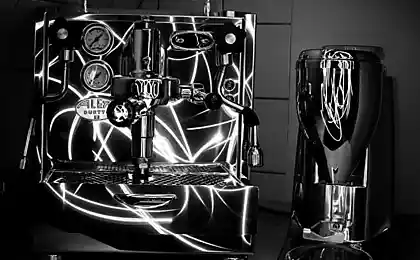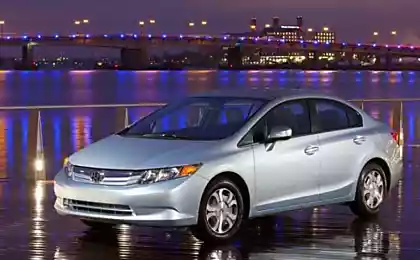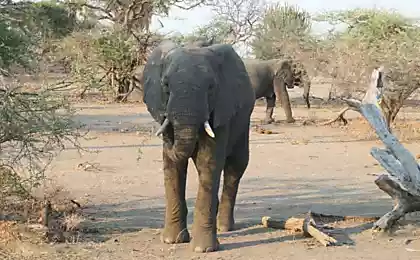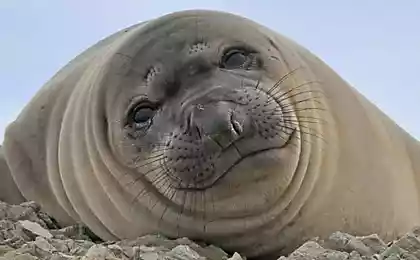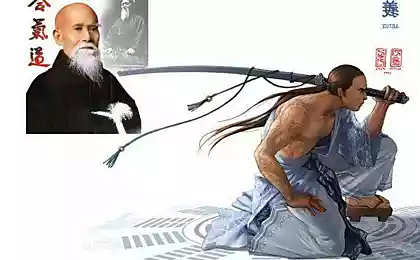990
Fighting elephants As fighting vehicles Past
The modern world and modern military equipment every day marching forward inexorably undergoing improvement by modern tehnologiy.I looking back into history sometimes can not believe that was so.
Battle elephants. 10 pictures.
This is an interesting chapter in the history of military affairs has always attracted the attention of writers, scientists.
Battle Tanks ancient elephants ... ... That was their purpose.
Especially exciting is about military elephants ancient authors because for Europeans these unusual animals such great and such obedient to the will of small drovers always remained an exotic curiosity.
But elephants are involved in wars long before the Greeks and the Macedonians first encountered them during the Indian campaign of Alexander the Great. They fought long and all the Middle Ages. And if the West branch was only quite short, episodic phenomenon, for a number of Eastern countries it was traditional, and left the scene, along with the traditional social order. Battle elephant was a division of the actual elephant and three people - mahout (driver drover), arrow and sarissofora (the Indian version - 4 persons: mahout, heavily-armed thrower darts and two archers).
Mahout openly located on the elephant's neck, and hands and sarissofor in the shelter of the light panels on the back of an elephant. Sarissofor protect elephants from the flanks, giving the enemy infantry selected to the legs and belly, and led the throwing arrows battle arrows and darts. But the main weapon of division itself is the elephant, which terrified by its size, the enemy trampled underfoot, the Impaler and choked trunk if wanted.

Elephants in ancient India used primarily against cavalry, as horses were afraid of elephants. They lined up at a distance of about 30 meters from each other, and in between them put the infantry, so the system looks like a wall with towers. Armature elephants in ancient India was not supposed to, but they richly decorated metal trinkets and red cloths. Generally speaking, the elephants were quite dangerous native troops. With luck they inflicted terrible damage to the enemy, but if the enemy was brave and skillful, elephants could be confused and peretoptat their own, which happened quite often. Therefore, such a highly valued art and training of driving these animals. It certainly was part of the training of Indian princes. Indian leaders were hired and the Hellenistic rulers.

In the Middle Ages, war elephants have been used in almost all of Asia - from Iran to China, from India to Arabia. But the tactics of their use is changing. If the early Middle Ages, the Indians and Persians still throwing the enemy the whole elephant compound, then later in the II millennium BC, elephants play a role more mobile fortresses, strongholds. In the descriptions of battles involving war elephants we have not read about the chilling scenes of mass elephant attacks, with hundreds trampled pierced tusks and trunks strangled. Normally elephants lined barrage line and only occasionally, in the moment of crisis, sending a short counterattack. Increasingly, they perform transport functions, bore the brunt of the big shooters or catapults.
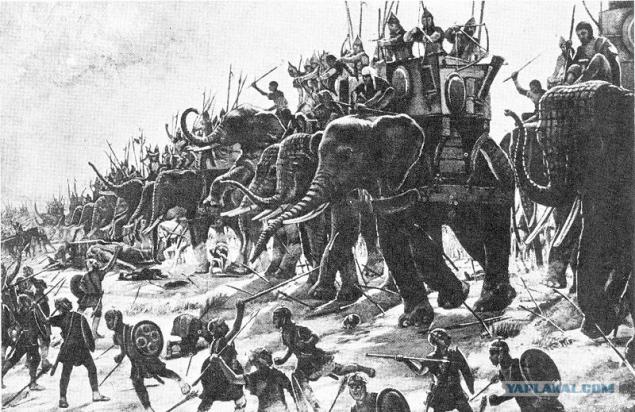
All commanders - Indian, Burmese, Thai, Vietnamese, Khmer, Chinese - tried to sit on the elephant. A Mongol Khan, winning in the XIII century Korea, sat in the tower, equipped on two elephants. Elephant to the commander was extremely convenient as from a height he could survey the battlefield far, he and his gestures as a decree could be seen from far away, well, in the event of the failure of the military powerful animal could make the rider of the horse and the human landfill. Equipment elephants in the Middle Ages did not undergo major changes: they are still in the battle prefer to decorate, not to protect

The most significant drawback of the elephant as a combat animal was his poor handling. Elephants, unlike horses, do not tend to blindly follow their superiors and very prudent. The elephant will not jump into the abyss, like a horse, with the leader of the herd. Elephant in general think twice before you do something.
The elephant mahout is subject solely out of friendship, but not out of fear, because the Community is not characteristic of elephants totalitarianism. In addition, in the units of elephants present a dual power: besides mahout, elephant and focused on their own leaders.
Therefore, on the one hand the elephants fought more consciously than a horse, hitting the enemy only at the rate of motion of its distinguished from others and consciously used swords. On the other hand, war elephants were not prone to unnecessary risk.

Only in the XVII century Indian XVI- masters did for elephants shells of steel plates connected by rings, but more often treated cloth headband with metal buckles. In Southeast Asia, the crew have invented a special platform, so that the soldiers could not just sit on the back of an elephant, but also to stand. Muslim warriors from Central Asia and Iran also staged on the backs of elephants platforms, but often supplemented their turrets with shields, and sometimes with a canopy.

Despite the fact that war elephant with little effort could go through any number of rows of infantry, he did not do it unnecessarily. Incite his infantry was difficult - if people do not parted, the elephant stopped and, at best, trying to clear the road.
Thus, war elephants, unlike the cavalry, soon exerted moral pressure on infantry than the real damage was applied

About fighting animals like elephants can say that they are characterized by low morale. Serious motive for participating in the battle to give them was impossible.
Undoubtedly, the failure of combat use of elephants and the displacement of their cavalry were largely due to the fact that this species had still not domesticated, but only tame. Livestock tame elephants always replenished by the capture of wild elephants. Selection, thus, produce, and war elephants different from working only in size, but not character.
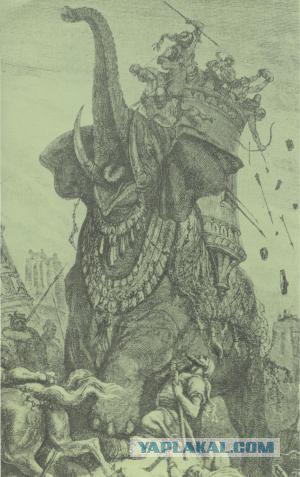
There is evidence that elephants for courage before the fight was allowed to beer or wine, or sugar and pepper. But hardly aim was getting drunk and violent elephant: a more expensive because the elephants and sober were poorly managed. As for sugar, and pepper, then their involvement to the excitation of an elephant fighting spirit ruled: metabolism elephants are not so original.
Rather, it dealt with the strengthening of the front of the battle morale and cohesion of units (the elephant with crew) during joint drinking alcohol napitkov.Ne possible that elephants preferred snack is sugar and pepper, and not, say, olives and cheese. In addition, perhaps, sugar and pepper to rise in the eyes of the elephant mahout and prestige of its own - an ordinary composition of these products were not included in the rations.
As you can see, the glory of battle elephants was somewhat exaggerated compared to their real value in world military history, but the fact that the effective use in such a difficult situation, such an animal like an elephant, can cause surprise and admiration for the art of human ingenuity.
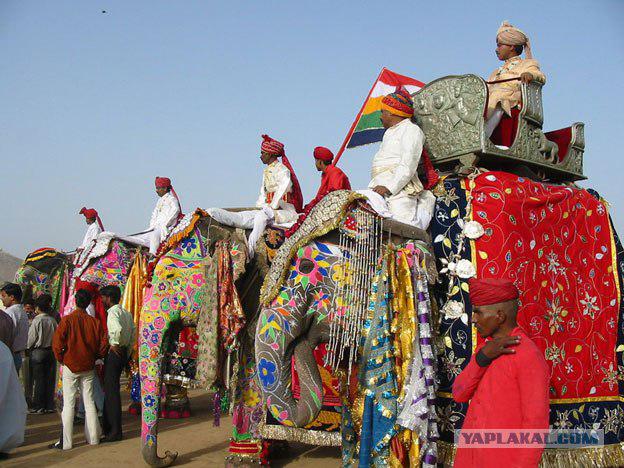
Source:
Battle elephants. 10 pictures.
This is an interesting chapter in the history of military affairs has always attracted the attention of writers, scientists.
Battle Tanks ancient elephants ... ... That was their purpose.
Especially exciting is about military elephants ancient authors because for Europeans these unusual animals such great and such obedient to the will of small drovers always remained an exotic curiosity.
But elephants are involved in wars long before the Greeks and the Macedonians first encountered them during the Indian campaign of Alexander the Great. They fought long and all the Middle Ages. And if the West branch was only quite short, episodic phenomenon, for a number of Eastern countries it was traditional, and left the scene, along with the traditional social order. Battle elephant was a division of the actual elephant and three people - mahout (driver drover), arrow and sarissofora (the Indian version - 4 persons: mahout, heavily-armed thrower darts and two archers).
Mahout openly located on the elephant's neck, and hands and sarissofor in the shelter of the light panels on the back of an elephant. Sarissofor protect elephants from the flanks, giving the enemy infantry selected to the legs and belly, and led the throwing arrows battle arrows and darts. But the main weapon of division itself is the elephant, which terrified by its size, the enemy trampled underfoot, the Impaler and choked trunk if wanted.

Elephants in ancient India used primarily against cavalry, as horses were afraid of elephants. They lined up at a distance of about 30 meters from each other, and in between them put the infantry, so the system looks like a wall with towers. Armature elephants in ancient India was not supposed to, but they richly decorated metal trinkets and red cloths. Generally speaking, the elephants were quite dangerous native troops. With luck they inflicted terrible damage to the enemy, but if the enemy was brave and skillful, elephants could be confused and peretoptat their own, which happened quite often. Therefore, such a highly valued art and training of driving these animals. It certainly was part of the training of Indian princes. Indian leaders were hired and the Hellenistic rulers.

In the Middle Ages, war elephants have been used in almost all of Asia - from Iran to China, from India to Arabia. But the tactics of their use is changing. If the early Middle Ages, the Indians and Persians still throwing the enemy the whole elephant compound, then later in the II millennium BC, elephants play a role more mobile fortresses, strongholds. In the descriptions of battles involving war elephants we have not read about the chilling scenes of mass elephant attacks, with hundreds trampled pierced tusks and trunks strangled. Normally elephants lined barrage line and only occasionally, in the moment of crisis, sending a short counterattack. Increasingly, they perform transport functions, bore the brunt of the big shooters or catapults.

All commanders - Indian, Burmese, Thai, Vietnamese, Khmer, Chinese - tried to sit on the elephant. A Mongol Khan, winning in the XIII century Korea, sat in the tower, equipped on two elephants. Elephant to the commander was extremely convenient as from a height he could survey the battlefield far, he and his gestures as a decree could be seen from far away, well, in the event of the failure of the military powerful animal could make the rider of the horse and the human landfill. Equipment elephants in the Middle Ages did not undergo major changes: they are still in the battle prefer to decorate, not to protect

The most significant drawback of the elephant as a combat animal was his poor handling. Elephants, unlike horses, do not tend to blindly follow their superiors and very prudent. The elephant will not jump into the abyss, like a horse, with the leader of the herd. Elephant in general think twice before you do something.
The elephant mahout is subject solely out of friendship, but not out of fear, because the Community is not characteristic of elephants totalitarianism. In addition, in the units of elephants present a dual power: besides mahout, elephant and focused on their own leaders.
Therefore, on the one hand the elephants fought more consciously than a horse, hitting the enemy only at the rate of motion of its distinguished from others and consciously used swords. On the other hand, war elephants were not prone to unnecessary risk.

Only in the XVII century Indian XVI- masters did for elephants shells of steel plates connected by rings, but more often treated cloth headband with metal buckles. In Southeast Asia, the crew have invented a special platform, so that the soldiers could not just sit on the back of an elephant, but also to stand. Muslim warriors from Central Asia and Iran also staged on the backs of elephants platforms, but often supplemented their turrets with shields, and sometimes with a canopy.

Despite the fact that war elephant with little effort could go through any number of rows of infantry, he did not do it unnecessarily. Incite his infantry was difficult - if people do not parted, the elephant stopped and, at best, trying to clear the road.
Thus, war elephants, unlike the cavalry, soon exerted moral pressure on infantry than the real damage was applied

About fighting animals like elephants can say that they are characterized by low morale. Serious motive for participating in the battle to give them was impossible.
Undoubtedly, the failure of combat use of elephants and the displacement of their cavalry were largely due to the fact that this species had still not domesticated, but only tame. Livestock tame elephants always replenished by the capture of wild elephants. Selection, thus, produce, and war elephants different from working only in size, but not character.

There is evidence that elephants for courage before the fight was allowed to beer or wine, or sugar and pepper. But hardly aim was getting drunk and violent elephant: a more expensive because the elephants and sober were poorly managed. As for sugar, and pepper, then their involvement to the excitation of an elephant fighting spirit ruled: metabolism elephants are not so original.
Rather, it dealt with the strengthening of the front of the battle morale and cohesion of units (the elephant with crew) during joint drinking alcohol napitkov.Ne possible that elephants preferred snack is sugar and pepper, and not, say, olives and cheese. In addition, perhaps, sugar and pepper to rise in the eyes of the elephant mahout and prestige of its own - an ordinary composition of these products were not included in the rations.
As you can see, the glory of battle elephants was somewhat exaggerated compared to their real value in world military history, but the fact that the effective use in such a difficult situation, such an animal like an elephant, can cause surprise and admiration for the art of human ingenuity.

Source:

